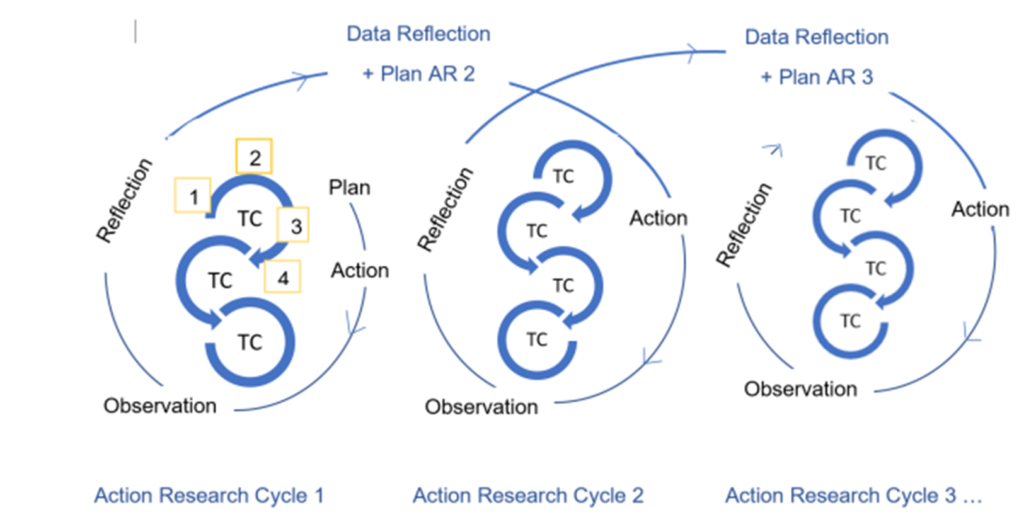Students can act as both an epistemic support and motivator for each other’s mathematics knowledge. From my experience, students work this way when the teacher’s authority is weakened. I wanted my students to engage in this kind of participation. The student’s authority will develop and change the teacher-student relationship over time. This directed my study towards an action-research methodology that seeks to answer the following questions:
- What are the indicators of shared epistemic agency in the mathematics classroom?
- What sustains the emergence of shared epistemic agency in the mathematics classroom?
The innovative pedagogy
My pedagogy will involve the students working collaboratively in line with the pedagogic principles I have established (see theoretical framework).
The innovative pedagogy is based around the five principles that I have synthesised from the literature. It is also informed by practices that I personally trialled in the classroom. As these principles stipulate a handing over of responsibility to the students, I will henceforth refer to students as “participants.” This is to emphasis not only their responsibility but also their agency in advancing the collective mathematics knowledge of members of the classroom.
The innovative pedagogy comprises four stages that aim for the students to participate in all stages of their learning process. It requires the participants to take on the roles of teacher participants (TPs) and student participants (SPs).

The research involved studying a group of eighteen 13-to-14-year-old participants and one teacher – myself – in the mathematics classroom of one secondary school in London, UK. The participants in the mathematics classroom were in Year 10, the beginning of a two-year GCSE Mathematics curriculum. Data collection commenced at the beginning of the 2018/2019 academic year and lasted for the whole year.
There were 7 teaching cycles across the study. A teaching cycle is complete when all students have taught a topic to the class.

The Action Research Design
At the end of the previous chapter, I identified the need for a study that combined two interwoven strands. Firstly, the design and enactment of an innovative pedagogy that promotes shared epistemic agency in a school context—secondly, data collection and analytical methods would enable me to answer my research questions. My reading of methodology literature led me to combine these two strands under the auspices of action research. This allowed me to engage in “a form of disciplined, rigorous enquiry, in which a personal attempt is made to understand, improve and reform practice” (Ebbutt in Cohen et al., 2018, p. 345). They were two cycles of action research. Cycle one comprised four teaching cycles. Cycle two comprised of three teaching cycles

Data Collection for the Action Research
I collected data at all stages of the teaching cycles as the diagram below shows.

I video recorded, teaching cycle three, teaching cycle 5 and teaching cycle 7. I carried out interviews at the end of each action research cycle.